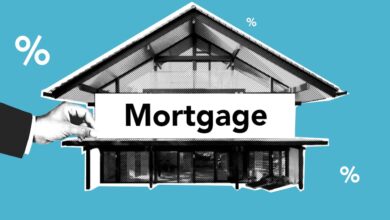Navigating Industrial Real Estate: Key Trends, Investment Strategies, and the Future of Warehouses, Factories, and Logistics Centers

The landscape of industrial real estate is rapidly evolving, driven by the increasing demand for warehouses, factories, and logistics centers. As e-commerce continues to flourish, the importance of industrial spaces in the supply chain has never been more pronounced. This article delves into the key components of industrial real estate, exploring how these specialized properties differ from traditional residential and commercial real estate. We will also examine current trends, such as the rise of PropTech and sustainable practices, which are reshaping the future of this sector. Furthermore, we will discuss investment opportunities available in industrial real estate, providing valuable insights and strategies for real estate investors and property management professionals. Whether you are a seasoned real estate agent or a first-time home buyer curious about property investment, this comprehensive guide will equip you with essential knowledge to navigate the dynamic world of industrial real estate successfully.
- 1. Understanding Industrial Real Estate: Key Components of Warehouses, Factories, and Logistics Centers
- 2. Trends in Industrial Real Estate: How PropTech and Sustainable Practices are Shaping the Future
- 3. Investment Opportunities in Industrial Real Estate: Strategies for Real Estate Investors and Property Management Professionals
1. Understanding Industrial Real Estate: Key Components of Warehouses, Factories, and Logistics Centers
Industrial real estate is a vital segment of the broader real estate market, encompassing warehouses, factories, and logistics centers that serve as the backbone of supply chains and production processes. Understanding the key components of these facilities can provide valuable insights for real estate investors, developers, and property managers.
Warehouses are designed primarily for the storage and distribution of goods. They often feature high ceilings, large open spaces, and loading docks that facilitate the efficient movement of inventory. With the rise of e-commerce, there has been a notable shift in real estate trends, leading to the development of modern warehouses equipped with advanced technology and automation systems. This evolution highlights the importance of PropTech in enhancing operational efficiency and improving property management strategies.
Factories, on the other hand, are industrial spaces where goods are manufactured. These facilities typically require specialized equipment and infrastructure to support production processes. Real estate development in this sector must consider zoning laws and regulations, ensuring compliance with real estate law while meeting the needs of manufacturers. Moreover, the push for sustainable practices has led to an increase in green real estate initiatives, where factories are designed with energy efficiency and reduced environmental impact in mind.
Logistics centers are critical hubs that facilitate the movement of goods between warehouses, factories, and end consumers. These centers often incorporate advanced logistics technologies, including tracking systems and automated sorting, to streamline operations. Real estate investing in logistics centers can be particularly lucrative, as the demand for efficient distribution networks continues to rise in response to changing consumer behaviors.
As the industrial real estate market evolves, investors and stakeholders should stay informed about emerging real estate strategies and trends. Understanding the nuances of each component—warehouses, factories, and logistics centers—can enhance property investment decisions and improve overall portfolio performance. Whether you’re a first-time home buyer exploring different property types or an experienced investor looking into real estate syndication, recognizing the value of industrial real estate can provide a competitive edge in the market.
In summary, the interplay between warehouses, factories, and logistics centers defines the industrial real estate landscape. By grasping these key components, stakeholders can better navigate opportunities in this essential sector of the commercial real estate market, ultimately contributing to more efficient supply chains and robust economic growth.
2. Trends in Industrial Real Estate: How PropTech and Sustainable Practices are Shaping the Future
The landscape of industrial real estate is undergoing significant transformation, driven by advancements in PropTech and a growing emphasis on sustainable practices. These trends are not only reshaping warehouses, factories, and logistics centers but are also influencing broader aspects of real estate investing and development.
PropTech has emerged as a game-changer in the industrial sector, streamlining operations and enhancing efficiency. By integrating innovative technologies such as automation, artificial intelligence, and the Internet of Things (IoT), property management companies can optimize their logistics and supply chains. This technological revolution allows for real-time data analysis, enabling stakeholders to make informed decisions that improve operational performance and reduce costs. Moreover, PropTech solutions offer enhanced visibility into rental properties, facilitating better property appraisals and more accurate market evaluations.
Sustainability has become a critical focus in industrial real estate, aligning with the growing demand for green real estate. Developers are increasingly incorporating eco-friendly designs and practices into their projects, such as using renewable energy sources, implementing energy-efficient systems, and prioritizing sustainable materials. This shift not only meets the expectations of environmentally conscious tenants but also aligns with evolving real estate laws and regulations aimed at reducing carbon footprints. As a result, properties that adhere to sustainable practices often enjoy increased marketability and can command higher rental rates, making them attractive options for investors.
Furthermore, the integration of these trends is influencing real estate marketing strategies. Industrial properties that highlight their technological advancements and sustainable features are more likely to attract attention from potential tenants and investors. Real estate agents must adapt their approaches to emphasize these unique attributes, which can also enhance the prospects for real estate syndication and crowdfunding opportunities.
In conclusion, the trends of PropTech and sustainable practices are undeniably shaping the future of industrial real estate. As these elements become increasingly intertwined, they offer new avenues for property investment and development, particularly in a market that continues to evolve. For those involved in real estate—whether they're seasoned investors or first-time home buyers—the implications of these trends are profound, influencing everything from real estate financing to long-term investment strategies. Keeping abreast of these developments is essential for anyone looking to navigate the complexities of global real estate successfully.
3. Investment Opportunities in Industrial Real Estate: Strategies for Real Estate Investors and Property Management Professionals
Investment opportunities in industrial real estate continue to expand as the demand for warehouses, factories, and logistics centers grows. For real estate investors and property management professionals, understanding the strategies that can maximize returns in this sector is essential.
One effective strategy is to focus on emerging trends in real estate development. With the rise of e-commerce, there has been a notable shift in logistics requirements, leading to increased demand for strategically located warehouses. Investors can capitalize on this trend by identifying properties in key distribution hubs. Furthermore, the integration of PropTech can enhance property management efficiency, making it easier for investors to monitor and optimize their investments.
Another opportunity lies in sustainable or green real estate. Properties that adhere to environmentally friendly practices are becoming increasingly attractive to tenants who prioritize sustainability. By investing in green industrial real estate, investors not only benefit from potential tax incentives but also appeal to a growing market segment focused on green initiatives.
Real estate crowdfunding also opens doors for those looking to enter the industrial real estate market without substantial capital. By pooling resources with other investors, individuals can engage in larger property investments that may have previously seemed unattainable. This strategy not only diversifies investment portfolios but also mitigates risks associated with individual property investments.
Moreover, understanding real estate financing options is crucial for maximizing investment potential. Investors should explore various financing avenues, from traditional loans to innovative financing solutions like real estate syndication. This approach can provide the necessary capital for acquiring rental properties and managing them effectively.
Finally, property appraisal and market analysis are essential components of successful real estate investing. By staying informed about real estate trends and conducting thorough due diligence, investors can identify undervalued properties, including foreclosures or properties needing rehabilitation, which can be flipped for profit.
In conclusion, industrial real estate presents a wealth of investment opportunities for savvy investors and property management professionals. By leveraging emerging trends, embracing sustainable practices, exploring crowdfunding, understanding financing options, and conducting careful property appraisals, investors can develop robust real estate strategies that yield substantial returns in this dynamic market.
In conclusion, industrial real estate is a dynamic sector that encompasses warehouses, factories, and logistics centers, playing a pivotal role in the broader landscape of commercial real estate. As we’ve explored, understanding the key components of these properties is essential for investors and property management professionals looking to navigate this complex market. The rise of PropTech and sustainable practices highlights the importance of staying abreast of real estate trends that prioritize efficiency and environmental responsibility, paving the way for greener, more innovative industrial spaces.
For real estate investors, the opportunities within industrial real estate are abundant, especially as the demand for logistics centers and warehousing continues to surge. By employing effective real estate strategies and leveraging tools such as real estate crowdfunding or syndication, investors can tap into this lucrative market while also contributing to the growth of affordable housing and commercial developments.
As you consider your next steps in property investment, whether it be through rental properties or real estate flipping, remember the importance of thorough property appraisal and understanding real estate law to mitigate risks. Embrace the future of industrial real estate by aligning your investments with current market trends and leveraging technology to enhance your property management practices.
Whether you are a first-time home buyer interested in broader real estate opportunities or an experienced investor looking to diversify your portfolio, the industrial sector offers unique advantages that can lead to substantial returns. Stay informed, be strategic, and continue to educate yourself on the evolving landscape of industrial real estate to ensure your success in this vibrant market.
References:
– [Insert relevant sources here]





